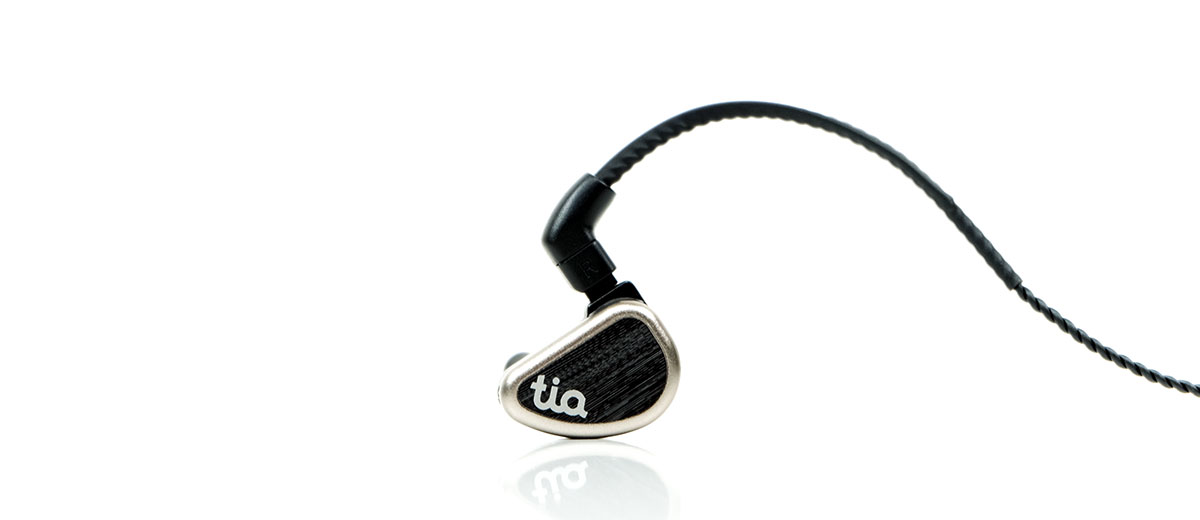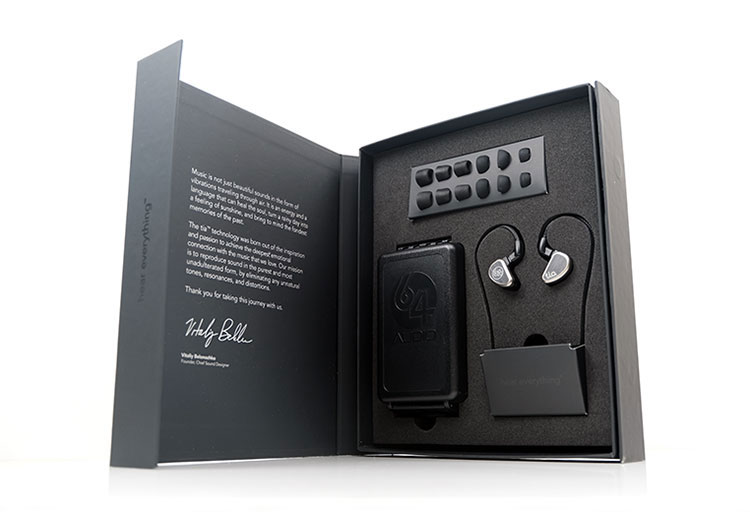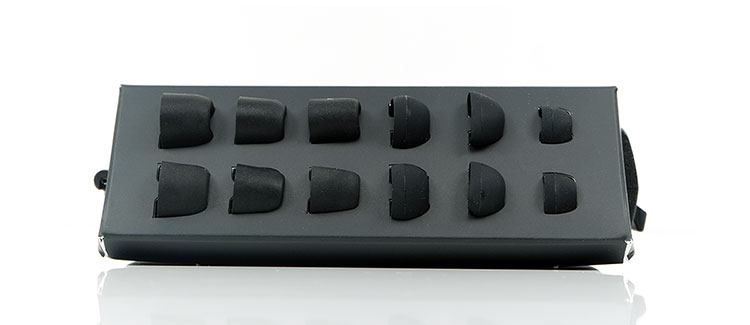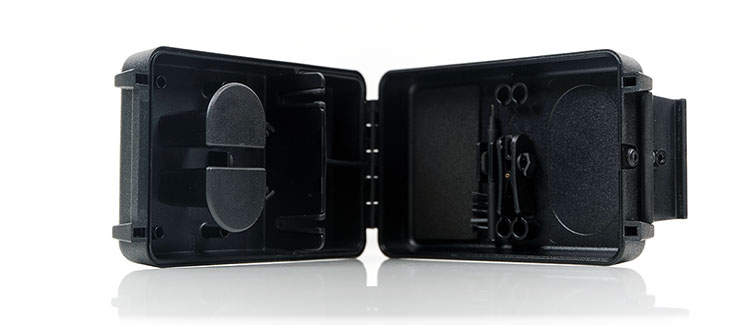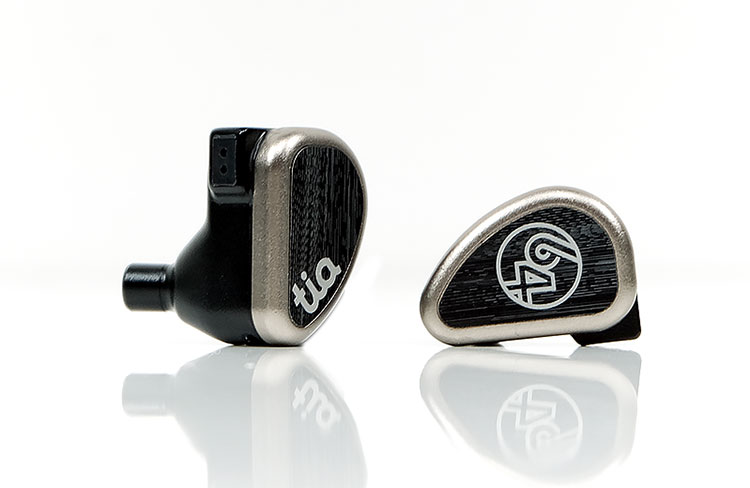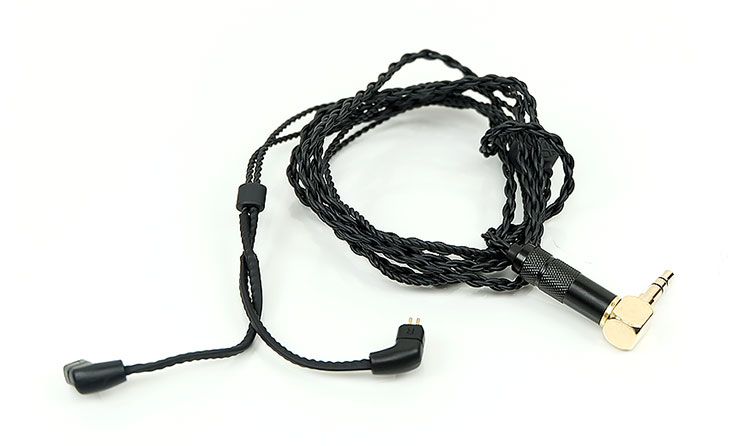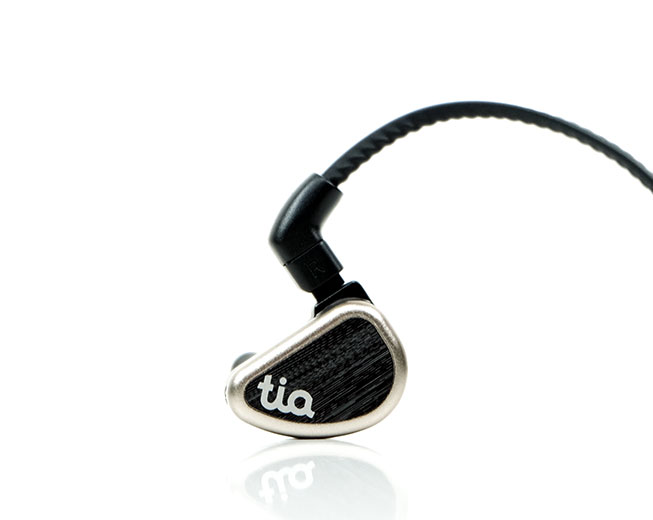Disclaimer: The 64 Audio tia Trio sent to us is a sample in exchange for our honest opinion. We thank the team at 64 Audio for giving us this opportunity.
To read more about the 64 Audio products we reviewed on Headfonics click here.
This is a welcome return to 64 Audio to the pages of Headfonics after an almost 2-year absence. Long story but the last we had done was the A18 ‘Tzar’ before it became an A18t in early 2017 and it is still one of my most highly rated monitors after all these years.
Since then 64 Audio has gone ‘tia’ and expanded the apex™ technology markedly into their product line with almost every existing monitor getting the ‘t’ treatment. They also launched the tia Fourté™ right after the A18 Tzar which is their flagship at $3,599.00 and their first tubeless design universal monitor using the tia technology.
The Story
The tia Trio is part of 64 Audio’s expanding U-Series under their Audiophile category and sits somewhere in the middle of the pack with the U12t below and the U18t and the tia Fourté™ just above.
This is a hybrid triple driver universal monitor and showcases pretty much most of 64 Audio’s latest technology including tia, LID, and apex. The configuration is 1 tia high, 1 high-mid, and 1 back-vented dynamic driver for the mids and lows.
tia™
tia stands for tubeless in-ear audio. 64 Audio has opened up its balanced armatures and done away with tubes for phasing the signal. Instead, the open-balanced armatures are placed inside a custom-tuned acoustic chamber with a single-bore outlet.
The tia high driver is placed right into the single bore cutting down the distance of the signal to the ear dramatically and enhancing the quality of the high-frequency performance of the tia Trio. The resulting output should be an enhanced perception of depth and a more open soundstage.
apex™
We introduced apex technology before in our A6 review back at the very start of 2017.
apex is short for Air Pressure Exchange. Essentially the end goal is the same and that is to reduce the level of pneumatic pressure being delivered alongside sound pressure when inserting and using a monitor.
By reducing this type of pressure the eardrum gets less of a work-over. Thus, the potential of long-term hearing damage from using such devices is reduced allowing you to safely play music at a louder level than you normally can.
apex works its magic through a series of small modules that are designed to fit snugly into the actual shell of the CIEM or directly integrated into the universal version. The modules use a multi-cell studio-grade TPE material which they claim to be very effective and should yield a consistent level of results with the new technology when deployed over the long term.
Unboxing
I guess I should not be surprised that in the space of two years, 64 Audio has really upped its game in terms of professional retail packaging. When I first worked with them 5 years ago it was pretty much an element-proof carry case in a plastic bag with stickers. That was par for the course with custom monitor manufacturers ‘back in the day’.
Now we have a fold-out pro-level large black box with excellent graphical printing and inside a clean and well-organized accessory/monitor presentation. The difference between now and then is stark!
Inside you get a range of tips in both silicone and memory foam, their small carry case which I first saw back in 2017 with the A6/A12, and the cable/monitor in a separate space. On the left side, you get a short introduction regarding tia from the founder of 64 Audio, Vitaliy Belonozhko.
Tips
The tips are single-bore silicone and foams. Both come in small, medium, and large sizes. Would I have liked to have seen some hybrids thrown in for good measure or dual flange? Possibly, but we will talk about that more in the main review as each set of tips has its own unique isolation capability and sound signature.
For sure the foams will seal better than the silicone tips but some might like the more open sound of the silicones.
Case
This is the standard case they have been using for a few years now for both universals and customs. It is not quite as sturdy as the older bulkier case and I am not sure it is weather-sealed but it is smaller and more pocket-friendly.
The inside of the case is very different from the old peli cases and is customized specifically for your tia Trio monitors. At the base, you have a pillar for wrapping the cable, and at the top a small rubberized dual box container for the driver units. In between, you have space for the silica gel and anything else that fits.
Underneath you also get an additional cleaning tool and shirt clip. If you have a custom monitor from 64 Audio you will see inserts for up to 4 modules with a small rubber pad that sits over the shells protecting them from knocks and bumps. Since the tia Trio module is integrated these inserts will be vacant.
Design
This is a sold and very clean form factor in the same vein as the tia Fourté™ build quality.
This is not a custom-universal acrylic build rather it is a 2-piece aluminum alloy shell design with matching faceplates. It is fairly angular in its lines, however, the curving is buttery smooth. The top of the main body shell is also finished with a strong-looking flush 2-pin 0.78mm socket stem.
The nozzle is fairly long so a lot of emphasis is being placed on the tips finishing off the seal. The nozzle doesn’t have too much of a lip on it but seems to hold the tips in place fairly securely.
Just on the inside, there is a small silver gauze to protect against dirt and moisture getting in and blocking that tia high driver which is quite close to the entry point of the single bore.
The finish is all black with a silver outer trim finish on the top of the plate with a lightly brushed charcoal/black central faceplate design. The labeling is tia on the left side and the 64 Audio logo on the right side.
Cable
The tia Trio uses a flush-mounted 2-pin 0.78mm socket and comes with a 4-wire 48″ detachable Silver-Plated Copper (SPC) cable.
The finishing on this cable has dramatically improved since I last used stock 64 Audio cables with a tight braided black jacket, hand-soldered 2-pin connectors, and a 3.5mm gold-plated connector. The 3.5mm jack is gold-plated and looks fairly durable.
There is a slight amount of memory retention in the cable, it does have some kinks but it’s not a cable that gets overly tangled.
The microphonics performance of the cable is really good, almost dead silent below the split. It also comes with low profile memory hooks that retain their shape with ease when manipulated so they will stay close to your ear which I tend to prefer.
Comfort & Fit
I have no issues with the level of comfort with the tia Trio on first impressions. I find the large foams to deliver the most secure fit compared to the large silicone tips which allow for a bit of movement by comparison.
The isolation is better than I expected when using the foams. My understanding is the integrated apex module is the M15 which is a bit more open than the M20 and isolates a little less.
I do prefer the M15 on the old A6 but I tend to use the denser sounding M20 on the A18. That’s more of a preference thing than anything else. The tia Trio is integrated so you cannot swap around.
Initial Sound Impressions
(Initial testing was done with the Lotoo PAW Gold and the Sony 1Z DAPs using the stock cable and 16BIT 44.1k FLAC tracks)
I remember hearing a prototype of the tia Fourté™ back in CanJam 2017 and remarked how musical and grand it sounded considering the driver count (that was a thing back then). When the production tia Fourté™ came out the signature had changed to a much cleaner and more precise sound. I kind of missed the prototype.
Ok, so aural memory is a wicked temptress but the tia Trio sound sort of brings me back to the memory of that original prototype sound. This is a relatively smooth and natural tone with a very nicely balanced presentation.
Overall, I would class this as U-shaped with a good sub-bass emphasis, a slight lower-midrange dip, and an emphasized 1-3k range for vocal presence. The low-end is a classic dynamic driver tone; big hits, plenty of texture, and a slightly longish but natural-sounding level of decay. You get plenty of depth with the tia Trio performance on initial impressions.
There is also a small amount of lower-treble lift but nothing strained or dominating with the main top-end lift around 8-9k instead.
The tia Trio highs are great highs. Some excellent articulation and extension but this is not a harsh sound at all. Most of my cymbal-heavy metal tracks sound accurate rather than splashy and vocals sound more clean and precise than sibilant on the tia Trio.
Treble done rather well here I think!
Power
In our initial testing, the tia Trio also seemed fairly easy to drive and in keeping with my experience of previous 64 Audio models which tended to be fairly sensitive. The dynamic driver does pull the SPL a bit lower at 104dB compared to the A18’s 116dB rating so you will need a little more current but not much more.
The impedance level is a crazy low 5.5Ω which means your smartphone, your DAP, and normal IEM sources will have no issues at all driving them. As an example, our Sony 1Z sat very nicely at 62 in low-gain unbalanced, and the Lotoo PAW Gold Touch at 55-60, also in low-gain.
Stay Tuned!
This is going to be an exciting review. I long pined for that tia Fourté™ prototype sound from CanJam Singapore 2017 and this is pretty close from memory and strikes a lovely balance between musicality and technical capability.
The use of a dynamic driver will change the presentation somewhat compared to my older A18 but I am very interested in seeing where these two differ in the main review. I remember Vlad and I agree on one thing out of that demo discussion. It is no longer about the driver count but in how the drivers are being used. The tia Trio is a class A example of just such a statement.
64 Audio tia Trió™ Specifications
- Transducer Type: 2 precision BA drivers, 1 dynamic driver
- Transducer Configuration: 1 tia high, 1 high-mid, 1 dynamic mid/low
- Freq. Response: 5Hz – 22KHz
- Sensitivity: 104db @1kHZ @1mw
- Impedance 5.5 +.5/-1.5 Ω from 10Hz – 20kHz
- Crossover: Integrated 3-way passive crossover
- Isolation: -15dB internal apex technology

